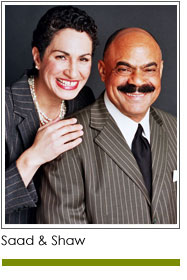 The African American and African Diaspora museums and cultural institutions that have emerged across the United States are a testimony to perseverance. At the same time they, like many other cultural institutions, face many challenges. Nonprofit CEO, capacity building consultant, master strategist and cultural arts worker Grace C. Stanislaus recently shared her perspectives on African American and African Diaspora giving, philanthropy, and the role of cultural and arts institutions.
The African American and African Diaspora museums and cultural institutions that have emerged across the United States are a testimony to perseverance. At the same time they, like many other cultural institutions, face many challenges. Nonprofit CEO, capacity building consultant, master strategist and cultural arts worker Grace C. Stanislaus recently shared her perspectives on African American and African Diaspora giving, philanthropy, and the role of cultural and arts institutions.
“Our present level of giving to social justice, civil rights, poverty, health, education, and other social and political causes, and to the arts, is truly remarkable. Our giving to the arts is especially remarkable given the systematic denigration of our contributions to American and world culture, and decades of exclusion from art history books and from mainstream museums.”
“Yet coupled with our remarkable progress are challenges,” Stanislaus continued. “One challenge is the dramatic scale up in the size of the architectural edifices we’ve built in the past several decades to house our art and to tell our stories. We’re suffering from the disparity between the increase in the economy of scale and the economic reality of what’s required to operate and sustain these multimillion dollar facilities. The “if you build it they will come” approach as a business model doesn’t work without strong financial and operational foundations such as endowments or reserves. It certainly doesn’t work when marketing funds are inadequate to nonexistent, and development departments are inadequately staffed.”
“In general our institutions experience a lack of diversity of funding sources and an overreliance on a small and over tapped community of funders,” she continued. “We need to focus on building high performing boards that in their makeup represents the diversity of our society and whose members deeply understand their role in bringing the right balance of wealth, wisdom and work to the equation.”
“More time and resources have to be put into cultivating the philanthropic/giving culture among members of our African American and African Diaspora communities, old and young. We need to recognize the changing climate of philanthropy in general, and find new and entrepreneurial approaches to sustaining and growing these valuable institutions.”
She ended the interview with a focus on the future, saying, “I’m encouraged when our museums establish young professional affiliate groups. While we continue to aggressively cultivate and expand our current donor base, and to establish planned giving programs, we must prepare a future generation of members, patrons, board members, angel investors, impassioned volunteers and ambassadors to take stewardship of our museums. The Studio Museum in Harlem has its Contemporary Friends program, MoAD has its dynamic MoAD Vanguard, and the National Museum of African American History and Culture is ahead of the curve in establishing its Ambassadors program. We have fought for our institutions; we now need to strategically ensure their survival and growth.”
Contact Grace C. Stanislaus at __gcsart@aol.com
Copyright 2013 – Mel and Pearl Shaw
Mel and Pearl Shaw are the authors of “Prerequisites for Fundraising Success.” They position nonprofits for fundraising success. Visit them at www.saadandshaw.com.












